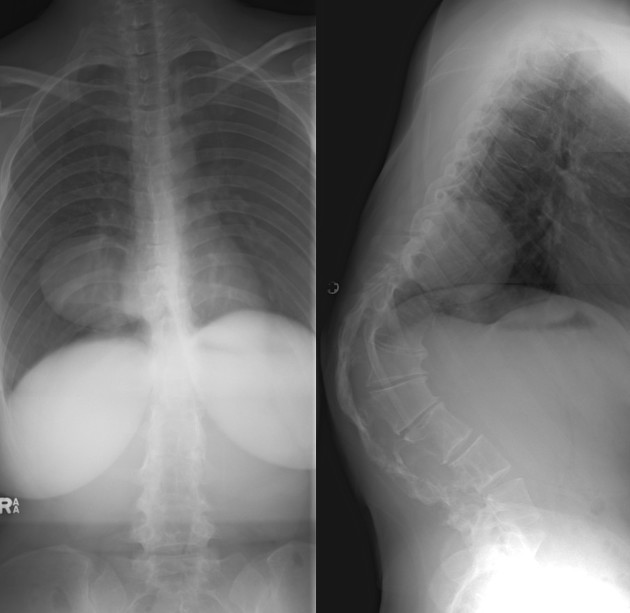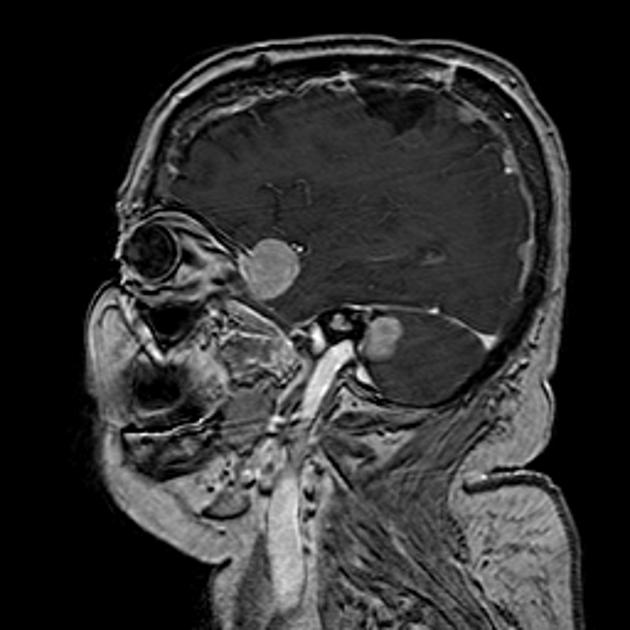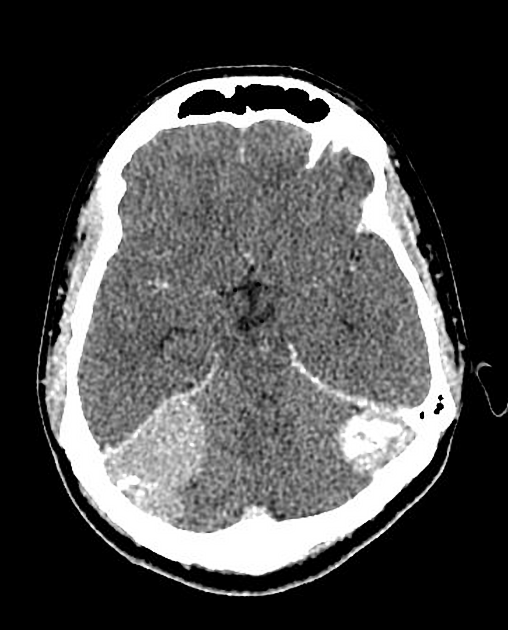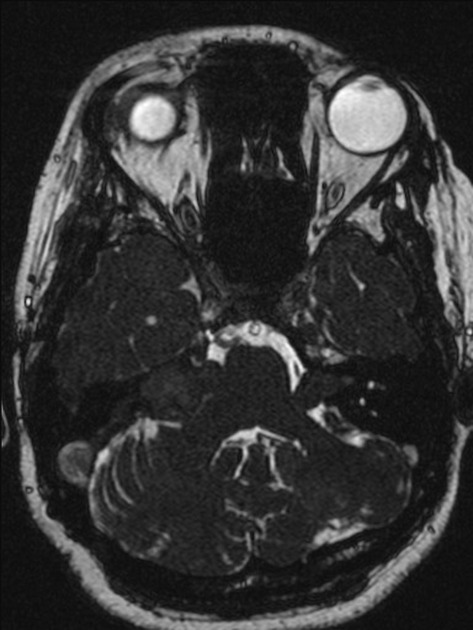Neurofibromatosis type 2 (NF2) is a rare autosomal dominant neurocutaneous disorder (phakomatosis) manifesting as a development of multiple CNS tumors. Unlike neurofibromatosis type 1 (NF1), it is not associated with neurofibromas. Instead, patients with this disease have
intracranial schwannomas: mostly vestibular schwannomas, however, sometimes patients may have spinal schwannomas
intracranial and spinal meningiomas
intraspinal-intramedullary ependymomas
On this page:
Terminology
The name neurofibromatosis type 2 has been described as a misnomer because neurofibromas are not a common part of its constellation of abnormalities, and it is not pathologically related to neurofibromatosis type 1 5. This inconsistency arose from the early 20th century misunderstanding that NF2 represented a 'central' variant of the more common 'peripheral' neurofibromatosis type 1 10.
The condition has been more accurately described by alternative names such as multiple inherited schwannomas meningiomas and ependymomas (MISME) and NF2-related schwannomatosis, but these are yet to gain general acceptance (c. 2022) 4,11.
Epidemiology
The disease is rare with an estimated prevalence of 1:50,000. NF2 usually presents in young adults (age 18-24 years) 7.
Of patients with NF2, 50% have an affected parent (autosomal dominant inheritance) and 50% having a de novo mutation 6,7.
Pathology
The NF2 gene is located on the long arm of chromosome 22 (22q12) and encodes the merlin protein (also known as "schwannomin"). It plays a role in contact inhibition of growth and has tumor suppressor function at least in part according to this mechanism 9. Although variably expressed throughout the body during human development, merlin is highly expressed in adult neuronal cells, Schwann cells, and meningeal cells. Mutations in NF2 cause loss of protein function, resulting in a predisposition to tumor formation throughout the nervous system 9.
Although meningiomas are often isolated findings in adults, their presence in a child should raise suspicion of NF2. The presence of multiple and different types of spinal tumors also raise a high suspicion of NF2 1.
Associations
There can also be associated syringohydromyelia with lesions in the spine 1 as well as cataracts 3.
Radiographic features
Please refer to articles on individual lesions for respective specific imaging features:
-
usually arise from the inferior vestibular division of the vestibulocochlear nerve
can also be from the facial nerve
ependymoma: usually spinal intramedullary (not intracranial/intraventricular)
Practical points
Bilateral vestibular schwannomas are diagnostic of NF2 7 but care should be taken because bilateral internal acoustic meatus masses are not specific for vestibular schwannoma and can represent, for example, sarcoidosis or metastases 6.


















 Unable to process the form. Check for errors and try again.
Unable to process the form. Check for errors and try again.